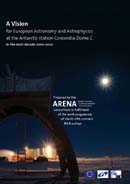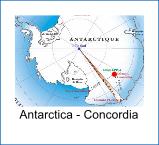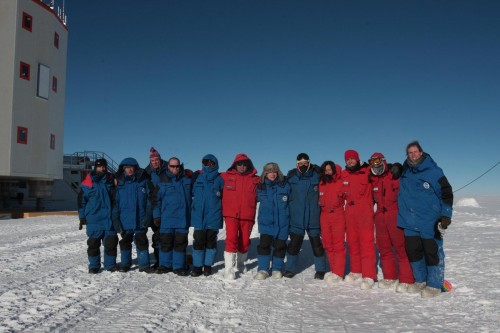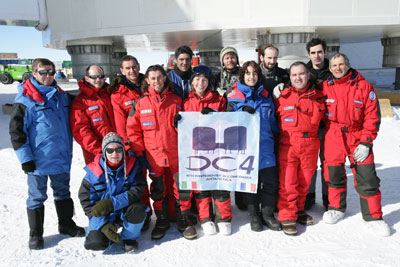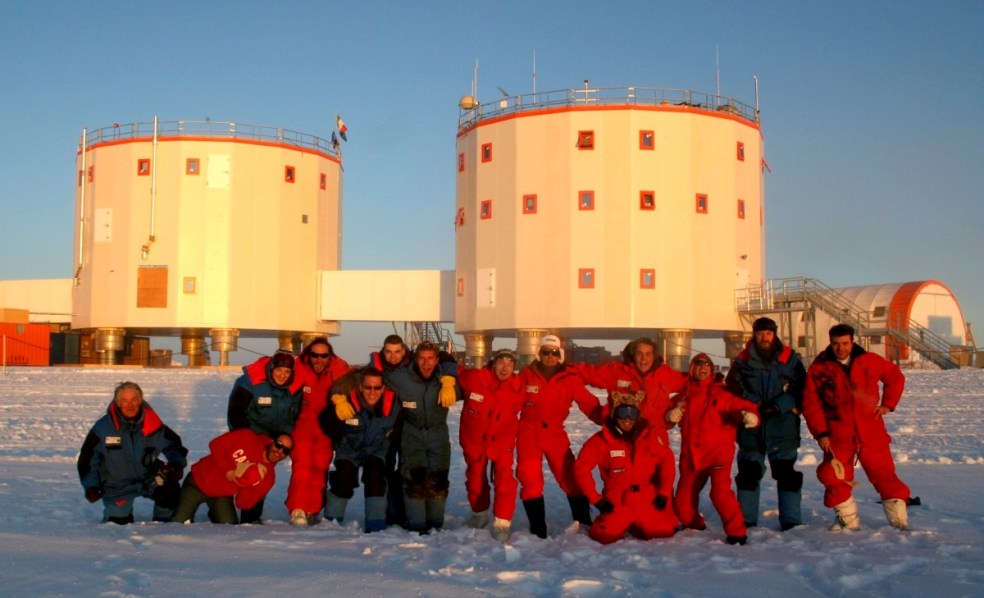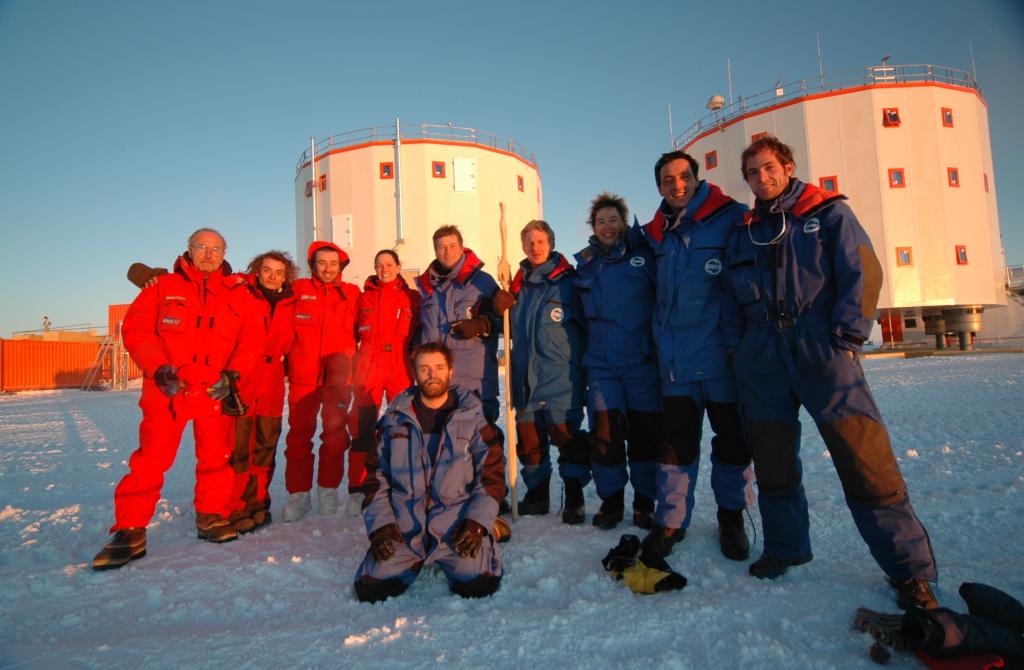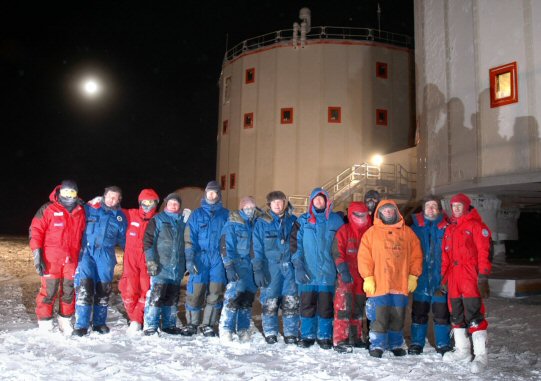After the American station Amundsen-Scott (established in 1956) located at the geographic South Pole and the Russian Vostok station (established in 1957), the Franco-Italian station Concordia is the 3rd scientific basis permanently inhabited, summer and winter, on the ice, in the interior of the Antarctic continent. All other permanent stations in Antarctica are coastal.
Several reasons related to its exceptional geographical location have contributed to the choice of the Dome C site for the construction of the station Concordia.
... in climatology
As mentioned earlier, the site of Dome C is ideal for making cores for paleoclimatology, the study of climate of the past, stored in layers of ice. Dome C is located on a layer of more than 3200 meters of ice thickness. With less than 50 mm of annual precipitation, nearly a million years of climate records are kept under the Concordia station.
Moreover, in parallel with the first deliveries of equipment for the construction of the station in 1996, EPICA-The European Project for Ice Coring consisting of twelve partners from ten countries, starts the preparation of the deepest ice-core drilling ever made. The 21st of December 2004, after 8 years of work, EPICA achieves technical feat: an ice core of 3270 meters, or 900,000 years of archives of climate change. Since the ice cores are stored partly on the site of Concordia they benefit so from the Concordia facilities.
|

|
|
The big white tent in which was held EPICA ice coring view from the Concordia station. ? Erick Bondoux (IPEV / PNRA)
|
... in astronomy
Situated at an altitude of 3233 meters, the Dome C is located on the high Antarctic plateau and is protected from strong katabatic winds, these great currents of air that carries high density air from 3000 meters elevation down a slope to the coast under the force of gravity to reach 300 km/h. Temperatures are extremely cold and can get up to - 80 ? C in winter. Annual precipitation is remarkably low with less than 50 mm, making the climate extremely cold and dry. For these reasons, the atmosphere over Dome C is cold, dry and stable, making an ideal site for astronomy. In addition of sub-polar latitudes (75? South), 3 months of full night per year and 3 months of daylight, make possible the observations of single stars and the sun continuously for the 3 months at Dome C. Thus, since the first scientific missions at Concordia station, several teams of astronomers are trying to characterize more precisely the quality of astronomical site. Many instruments have been installed, others are underway. The ARENA Network has been working since 2006 to coordinate the ideas of European laboratories for the future of Antarctic astronomical observatory and deliver a roadmap for Dome C to "become" an astronomical observatory for the next decade.
Away, more than 1100km from Antarctic coast, the Dome C is completely isolated from any disturbance which can also carry out seismic and magnetic studies unique.
|

|
|
In the center, two wooden platforms with a set of AstroConcordia experiments dedicated to site testing, on the right, the Italian radio telescope Cochise devoted to study dark energy that is the cause of the accelerating expansion of the Universe. ? Djamel M?karnia
|
